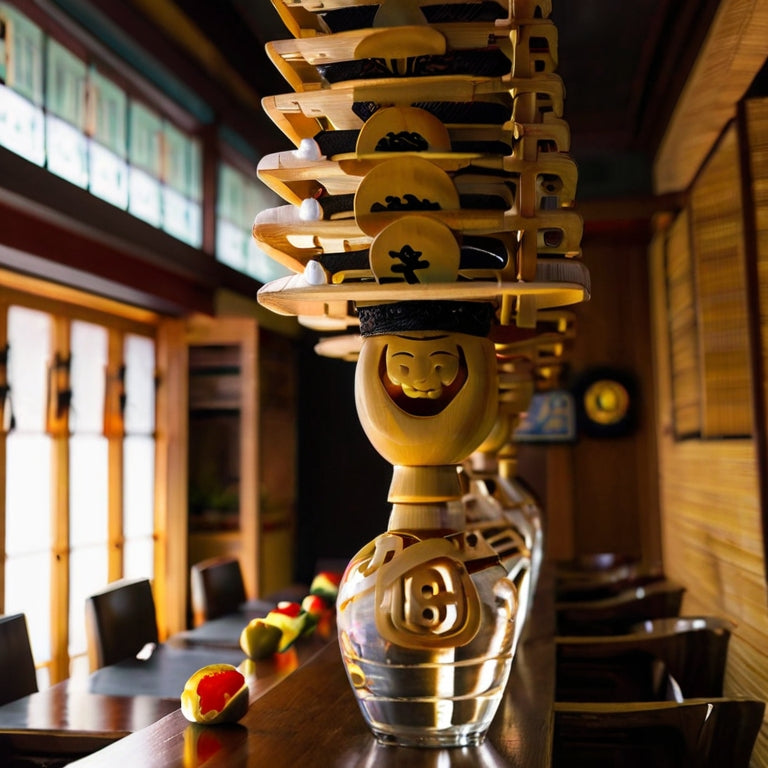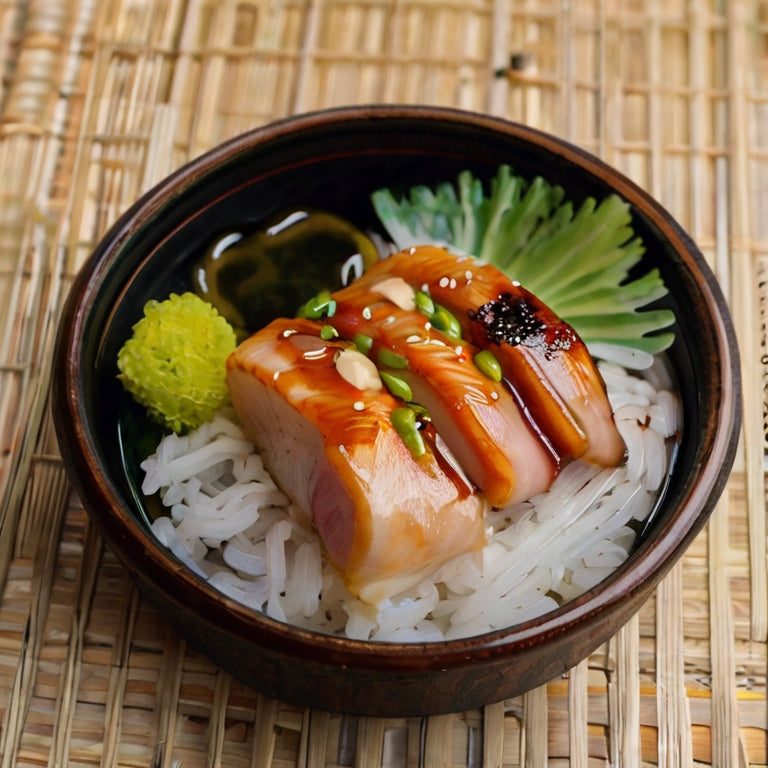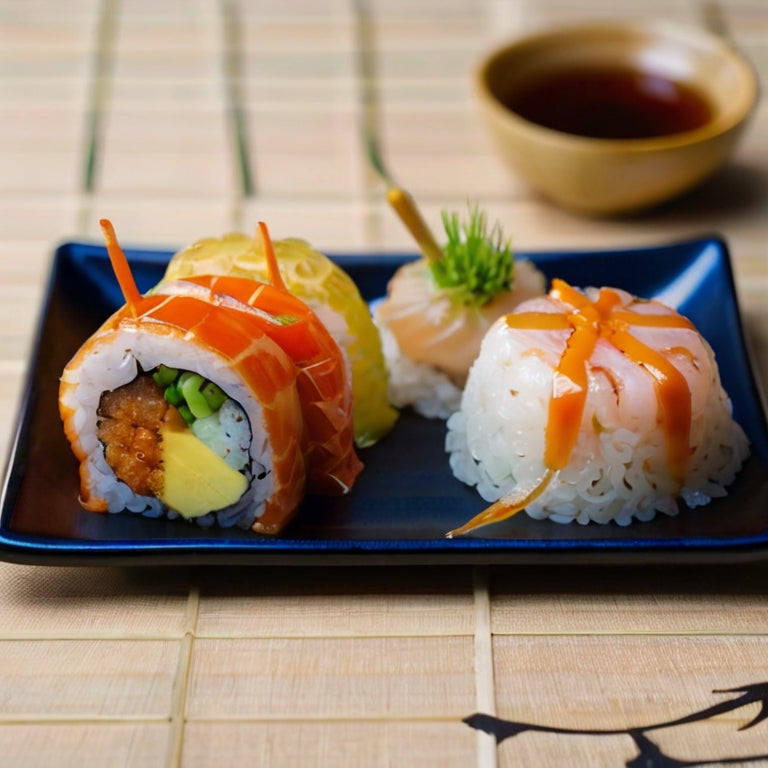What is the traditional Japanese diet?

The traditional Japanese diet emphasizes less processing and natural flavor, usually with rice, noodles, fish, tofu, natto, seaweed and fresh, fruits and vegetables, a small amount of eggs and dairy products and meat. Added less sugar and fat. Japanese meals usually consist of staple food ( steamed rice or soba noodles, ramen or udon noodles) , soup ( usually miso soup made from seaweed, shellfish or tofu and vegetables in fermented soybean soup) , and main dishes ( fish, seafood, tofu or Natto and optionally a small amount of meat, poultry or eggs) and some side dishes (vegetables, wild plants, seaweed and fruits) .
Visual appeal is another important aspect of traditional Japanese food. Dishes tend to be eaten with chopsticks, because this method is believed to create a rich flavor. Green tea or cold barley tea is the preferred beverage, and dinner may include beer and sake. Snacks are relatively rare .
The potential health benefits of the traditional Japanese diet are
rich in nutrients and beneficial compounds
. The traditional natural diet in Japan is rich in various nutrients, including fiber, calcium, potassium, magnesium, iron, and vitamins A, C, and E. Vegetables help increase the nutrient density of the diet . Seaweed and green tea are both important sources of antioxidants.
Fish and seaweed provide omega-3, which can promote brain, eye and heart health.
Improve digestion
Seaweed, soybeans, fruits and vegetables are rich in fiber. Insoluble fiber allows food to pass through the intestines and increases stool volume, thereby reducing the risk of constipation. Soluble fiber feeds beneficial bacteria in the intestines and helps reduce the space for harmful bacteria to multiply. When intestinal bacteria in soluble fiber diet based , it will produce short chain fatty acids (of SCFA), reduce inflammation and irritable bowel syndrome (IBS), the symptoms of Crohn's disease and ulcerative colitis. In addition, pickled fruits and vegetables are an important source of probiotics. These beneficial bacteria can promote intestinal health and reduce digestive symptoms such as gas, bloating, constipation and diarrhea.
Healthy weight
Japanese traditional diet is rich in vegetables, small in quantity, and low in natural sugar and fat. These factors will lead to low calorie content. In addition, Japanese culture encourages eating 80% full and avoiding overeating . In addition, fiber-rich vegetables, soy foods, and soups in a typical Japanese traditional diet may help reduce appetite and increase satiety, thereby promoting weight control.
Preventing chronic diseases
Japanese traditional diet can prevent type 2 diabetes and heart disease. Naturally rich in fish, seaweed, green tea, soy, fruits and vegetables, but the amount of added sugar, low fat and animal protein - all of these factors can prevent heart dirty disease. In fact, despite the high salt intake of Japanese people, their risk of heart disease is still unexpectedly low.
Moreover, in a 6-week study of 33 men who followed traditional Japanese eating habits, 91% of them had significantly lower risk factors for type 2 diabetes, including overweight and high LDL (bad) cholesterol levels.

Can help you live longer
Japan is one of the countries with the highest life expectancy in the world, and many experts attribute it to traditional Japanese eating habits. In a 15-year study of more than 75,000 Japanese people, compared with traditional eating habits, those who strictly followed traditional Japanese eating habits had a 15% lower risk of premature death than those who accepted Western food eating habits. . Experts believe that this extended lifespan and traditional Japanese diet emphasizes the overall, minimally processed foods, and low added fat and sugar.
Foods to eat
Japanese traditional diet is rich in the following foods:
fish and seafood. Can include all types of fish and seafood. These can be steamed, grilled, grilled or eaten raw, just like sushi and sashimi.
Soy food. The most common are edamame, tofu, miso , soy sauce, tomatoes and natto.
fruits and vegetables. Generally, fruits can be eaten raw or pickled, while vegetables can be steamed, fried, pickled, stewed in broth or added to soup.
Seaweed. Seawater vegetables are an important part of the traditional Japanese diet. They are usually eaten raw or dry.
Tempura is a lightweight dough made by mixing wheat flour with ice water or soda water. It acts as a batter for fried seafood and vegetables.
Rice or noodles. Steamed rice is a staple food in the traditional Japanese diet. Other popular choices include soba, ramen or udon noodles in cold and hot soups.
Drink. Green tea and cold barley tea are the main drinks, although beer and sake are available for dinner.
It can also include small amounts of red meat, poultry, eggs, and dairy products. However, these foods do not make up a large proportion of the traditional Japanese diet.
The traditional Japanese diet minimizes the following foods:
Dairy products: butter, milk, cheese, yogurt, ice cream, etc.
Red meat and poultry: beef, pork, chicken, duck, etc.
Eggs: boiled, fried, omelet, etc.
Excess fats, oils and sauces: margarine, cooking oil, seasonings, high-fat sauces, etc.
Baked goods: bread, pita, tortilla, croissant, pies, brownies, muffins, etc.
Processed foods or sugary foods: breakfast cereals, cereals, candies, sodas, etc.














